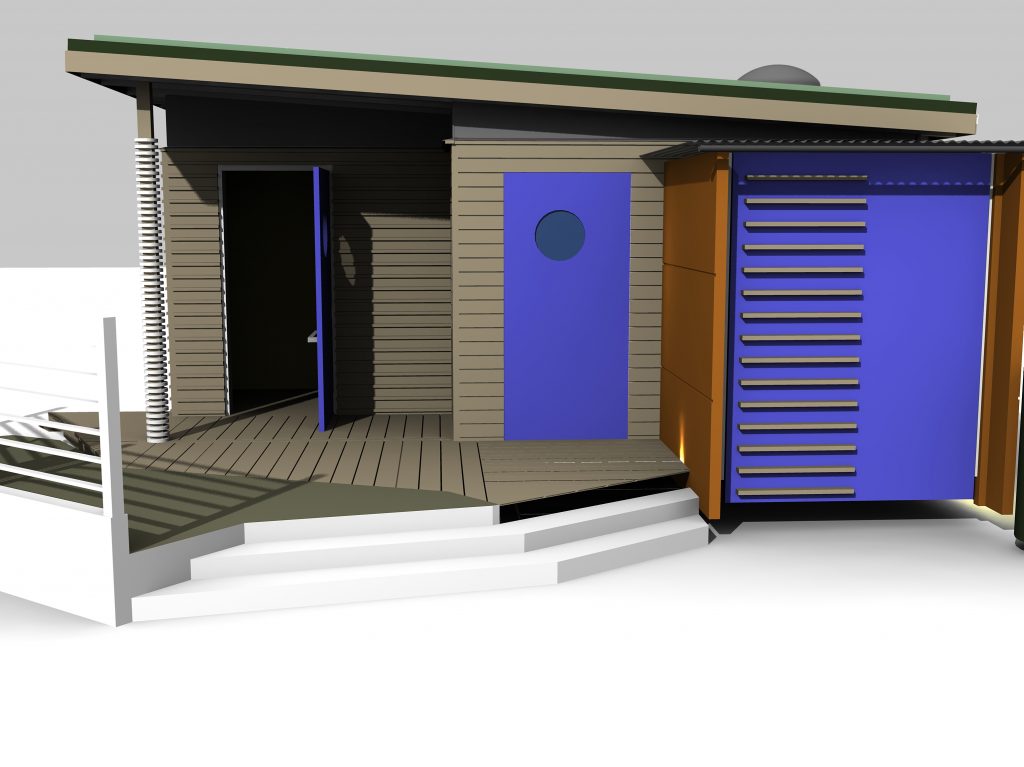As Sustainable Architects Shape Architecture has designed many timber framed buildings. These vary in scale from the recycled Eco Sheds to the new Early Years Building for Anthony Roper School
In each instance the use of timber both as elements of the structural frame and also the facade cladding has formed an integral part of the response to a sustainable brief.
Allied to projects that demanded a creative approach to tight budgets these buildings have proved to be tremendously successful.
Our Early Years building in Eynsford in Kent takes its form from the Dragonflies that can be seen at the edge of the River Darent bordering the site. The Wings of he dragonfly provide roofs to light and airy classrooms whilst it’s body is a green roof. In this way a simple and interesting form is created by virtue of the roof and it is the use of timber and its mix with other materials that provide a range of interesting facade treatments. Siberian Larch is used as a series of horizontal boards for wall cladding and when these walls sit below a sedum roof then each board had a batten fixed to it for further articulation. The fascia boards to the sedum roof are rough sawn Siberian latch and the soffit board is Birch Faced Ply. The timber facades never directly abut the roof but rather in the classrooms are separated by a continuous band of high level glazing and at the lower sedum elevations by a band of recycled roofing slates. Timber strips are used further to form several ramps into the classrooms linking the outside and inside as these ramps are big enough to sit on.
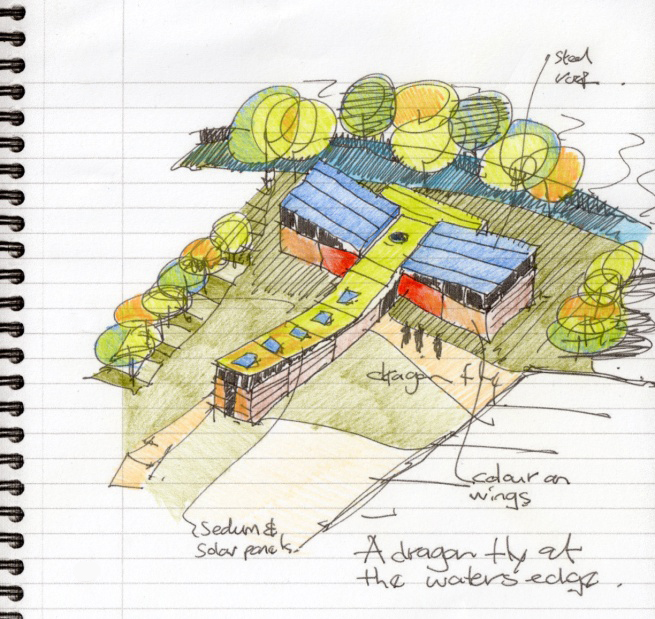
Our Eco Shed One project in Hammersmith is a timber framed and timber clad structure with a sedum roof. The timber posts sit in steel shoes which are bolted into isolated concrete foundations to minimise disruption in the ground. The cladding is again principally Siberian Larch. A store room which houses gardening equipment is painted WBP ply and the walls of which are suspended from the roof structure and do not touch the ground. This helps stop any migration of moisture and also vents the storage space. A timber column visible on the terrace is simply wrapped in rope. Timber is also used throughout the project in respect of a number of recycled solid timber doors that were purchased and used variously as external balustrade panels, interior kitchen units and window seats.
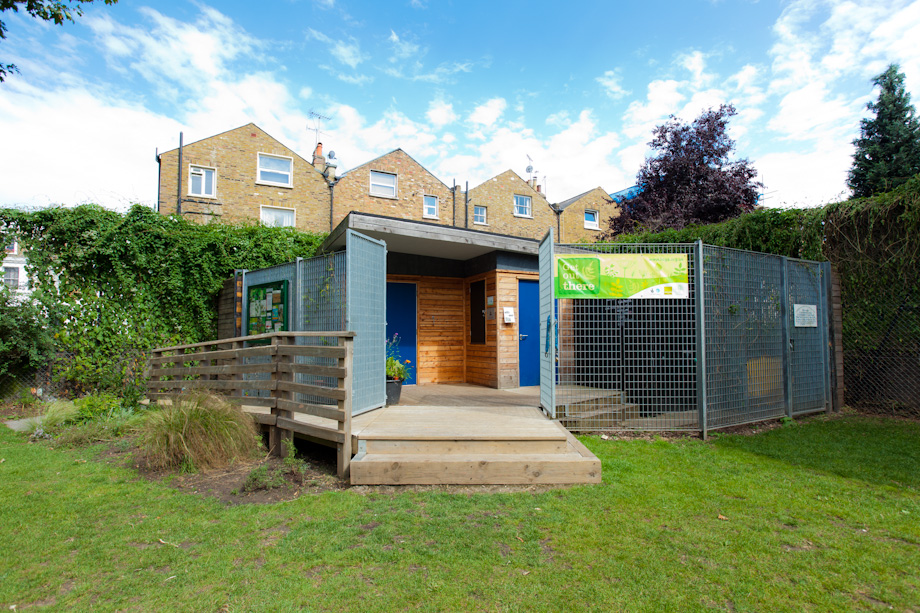
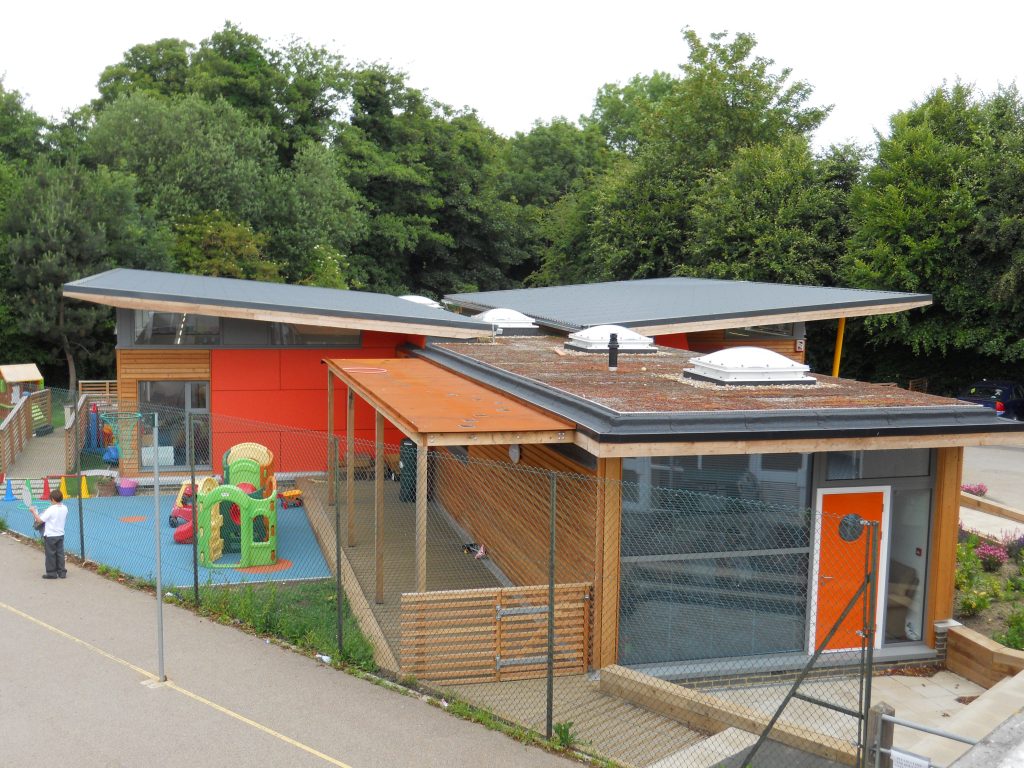
Eco Shed Two followed on for the same Client and this time is located in a public park in Hanmersmith. Here the sedum roof is replaced by a Rubble Roof. The timber structure and cladding remain the same as we had been able to witness how well it had weathered on the earlier Eco Shed project.
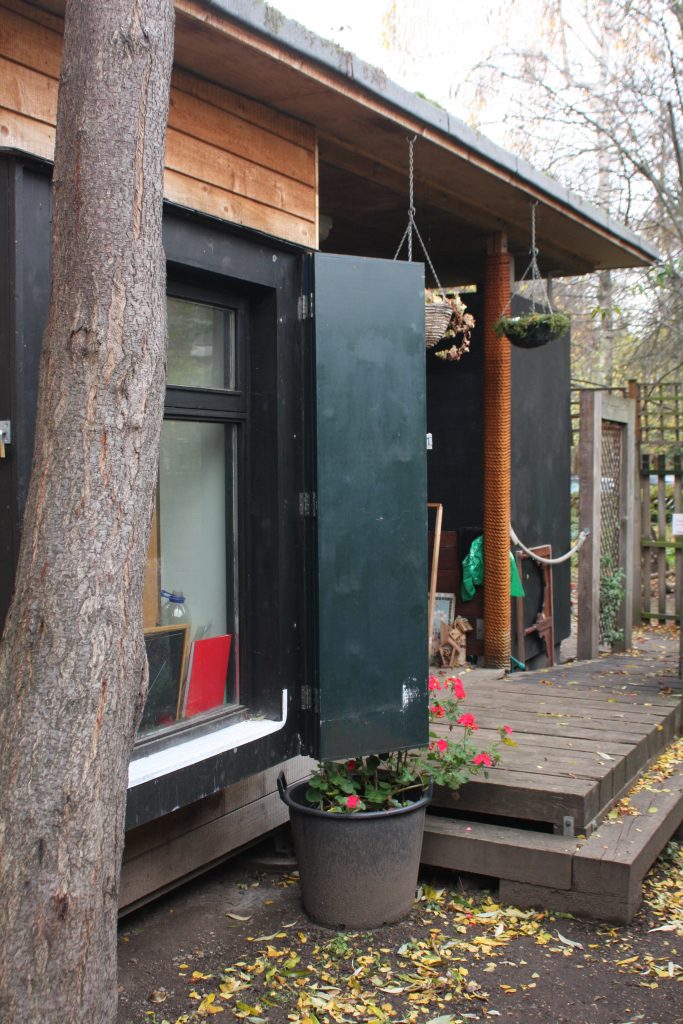
It is clear from these timber buildings that the use of timber as a structural and cladding material is a very successful approach to creating sustainable buildings and that the use of timber sits very well alongside other materials such as Sedum roofs and various recycled products when creating low energy buildings.
To ensure the longevity of these structures certain key construction details must be followed. The phrase ‘good boots and a big hat’ is useful. This ensures that the timber cladding is kept off the wet ground and splash zone and at its top a large projecting roof eaves gives protection from rain. Equally important is ensuring that the timber cladding is well ventilated with clear ventilation runs at top and bottom.
At Anthony Roper school as we were building next to a river the building came out of the ground in engineering brickwork to a datum before the timber cladding started and a mix of projecting waves and canopies gave protection from driving rain. At the Eco Sheds the building sat off the ground entirely with only the timber posts in their steel shoes connecting to individual circular concrete foundations, which themselves sat just above ground level.
